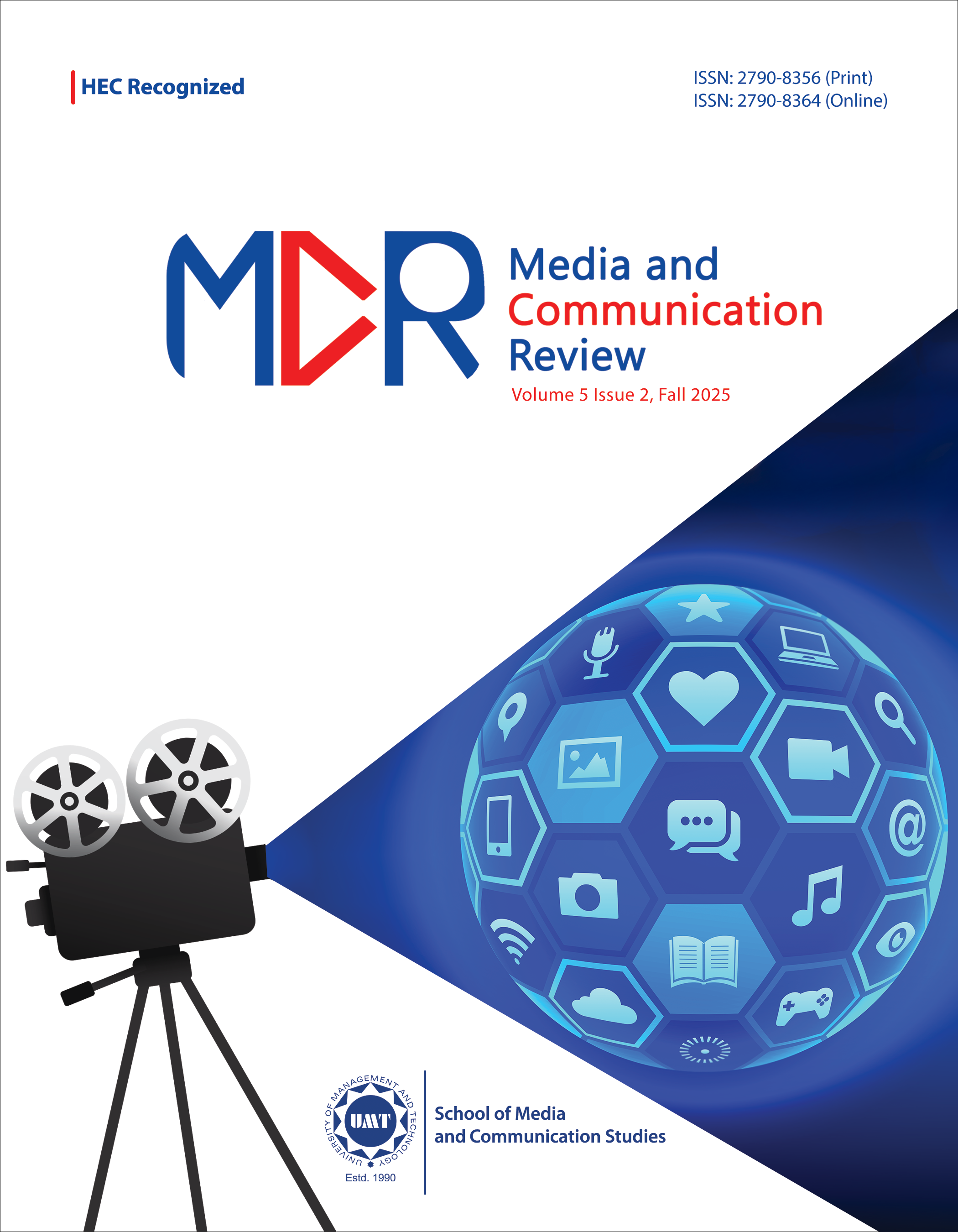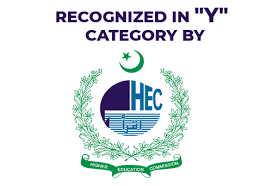Media’s Role in Combating Animal Cruelty in Pakistan: A Survey of Pet Owners
Abstract
 Abstract Views: 0
Abstract Views: 0
Animal cruelty is a global issue, impacting animal welfare and societal value. In Pakistan, abusive sports like dog fighting, cockfighting, and pigeon flying are prevalent. Cultural norms and lack of legal protection contribute to this issue. This study investigates the media's role in raising awareness and combating animal cruelty. A cross-sectional survey was conducted with 500 Pakistani pet owners, and a self-constructed questionnaire was distributed among participants. Convenient sampling was used for data collection, and SPSS (Version 26) was used for data analysis. The study reveals that media coverage positively impacts public responses to animal cruelty. Print media, particularly magazines, increase knowledge about animal cruelty, while radio and electronic media raise awareness about animal rights and prevention. Social media, particularly Facebook, is more effective. The study emphasizes the need for strategic media interventions to foster a more compassionate society, and recommends the government to ensure proper implementation of laws in Pakistan.
Downloads
References
Acquia. (2022, October 3). Benefits of advertising through print in media. https://www.acquia.com/blog/benefits-of-content-management-system
Adler, R., Mansi, M., & Pandey, R. (2020). The houbara bustard: A thematic analysis of a bird’s threatened extinction and a government’s accountability failure. Accounting, Auditing and Accountability Journal, 34(5), 1190–1219. https://doi.org/10.1108/AAAJ-07-2019-4113
Aji, A. P. (2019). The role of social media in shaping the animal protection movement in Indonesia. Jurnal Studi Komunikasi (Indonesian Journal of Communications Studies), 3(3), 389–402. https://doi.org/10.25139/jsk.v3i3.1666
Animal People. (2012). Puppy millers move from malls to websites. http://www.animalpeoplenews.org/anp/wpcontent/uploads/2012/02/puppy_mills_1.jpg
Awan, J. A., & Rahim, S. (2018). Animal rights and welfare in Islam. International Journal of Avian & Wildlife Biology, 3(6), 427–430.
Barber, S., & Hathaway, M. (2022). China’s pet activists: Using moral arguments and epidemic concerns to make space for animal rights. International Review of Environmental History, 8(1), 65–82. https://doi.org/10.22459/IREH.08.01.2022.04
Bir, C., Croney, C. C., & Widmar, N. J. O. (2019). US residents’ perceptions of dog welfare needs and canine welfare information sources. Journal of Applied Animal Welfare Science, 22(1), 42–68. https://doi.org/10.1080/10888705.2018.1476862
Ceccato, V., Lundqvist, P., Abraham, J., Göransson, E., & Svennefelt, C. A. (2022). Farmers, victimization, and animal rights activism in Sweden. Professional Geographer, 74(2), 350–363. https://doi.org/10.1080/00330124.2021.2004899
Cruelty to animals: Eight caught betting on racing bulls. (2016, May 9). The Express Tribune. https://tribune.com.pk/story/1100156/cruelty-to-animals-eight-caught-betting-on-racing-bulls
Daily Mail. (2011, Febuaray 28). Baying mob watches dogs fight to the death in barbaric tournament in Pakistan. https://www.dailymail.co.uk/news/article-1361475/Pictured-The-horrific-world-dog-fighting-tournaments-Pakistan-baying-mob-urges-animals-fight-death.html
Darden, D. K., & Worden, S. K. (1996). Marketing deviance: The selling of cockfighting. Society and Animals, 4(2), 211–231. https://doi.org/10.1163/156853096X00160
Daston, L., & Mitman, G. (2005). Thinking with animals: New perspectives on anthropomorphism. Columbia University Press.
Evans, P. (2010). Is it labor’s turn to globalize? Twenty-first century opportunities and strategic responses. Global Labour Journal, 1(3), 352–379.
Ferrere, M. B. R. (2018). Codes vs regulations: How best to enforce animal welfare in New Zealand? Alternative Law Journal, 43(4), 250–256. https://doi.org/10.1177/1037969X18799791
Harrington, L. A., Elwin, A., Paterson, S., & D’Cruze, N. (2023). The viewer doesn’t always seem to care: Response to fake animal rescues on YouTube and implications for social media self-policing policies. People and Nature, 5(1), Article e10416. https://doi.org/10.1002/pan3.10416
Hurriyet Daily Pakistan. (n.d.). Traditional bull racing in Pakistan. Retrieved July 22, 2025, from https://www.hurriyetdailynews.com/traditional-bull-racing-in-pakistan-2432
Jacobsson, K., & Lindblom, J. (2013). Emotion work in animal rights activism: A moral-sociological perspective. Acta Sociologica, 56(1), 55–68. https://doi.org/10.1177/0001699312466180
Jarvie, K., Evans, J., & McKemmish, S. (2021). Radical appraisal in support of archival autonomy for animal rights activism. Archival Science, 21(4), 353–372. https://doi.org/10.1007/s10502-021-09362-3
Javed, M. N., Basit, A., & Hussain, T. (2020). Climate change in the mainstream Pakistani press: Coverage and framing trends. Global Political Review, 5(1), 192–204. https://doi.org/10.31703/gpr.2020(v-i).22
Junaidi, I. (2016, January 15). Hunters stalk Siberian geese flying south to Rawal Lake. Dawn News. https://www.dawn.com/news/1233130
Kopnina, H. (2017). Beyond multispecies ethnography: Engaging with violence and animal rights in anthropology. Critique of Anthropology, 37(3), 333–357. https://doi.org/10.1177/0308275X17723973
Lu, J., Bayne, K., & Wang, J. (2013). Current status of animal welfare and animal rights in China. ATLA Alternatives to Laboratory Animals, 41(5), 351–357. https://doi.org/10.1177/026119291304100505
Mogbo, T. C., Oduah, F. N., Okeke, J. J., Ufele, A. N., & Nwankwo, O. D. (2013). Animal cruelty: A review. Journal of Natural Sciences Research, 3(8), 94–98.
Morton, R., Hebart, M. L., Ankeny, R. A., & Whittaker, A. L. (2022). Portraying animal cruelty: A thematic analysis of Australian news media reports on penalties for animal cruelty. Animals, 12(21), Article e2918. https://doi.org/10.3390/ani12212918
Mota-Rojas, D., Monsalve, S., Lezama-García, K., Mora-Medina, P., Domínguez-Oliva, A., Ramírez-Necoechea, R., & Garcia, R. de C. M. (2022). Animal abuse as an indicator of domestic violence: One health, one welfare approach. Animals, 12(8), Article e977. https://doi.org/10.3390/ani12080977
Moussa, M. (2021). The culture puzzle: Harnessing the forces that drive your organization’s success. Berrett-Koehler Publishers.
Mummery, J., & Rodan, D. (2018). Digitising kids with chooks to supercharge one online activism campaign. In L. Green, D. Holloway, & K. Stevenson (Eds.), Digitising early childhood (pp. 319–332). Cambridge Scholar Publishing
Munro, L. (2022). Animal rights and anti-speciesism. In M. Grasso & M. Giugni (Eds.), The Routledge handbook of environmental movements (pp. 199–214). Routledge.
Parlasca, M., Knößlsdorfer, I., Alemayehu, G., & Doyle, R. (2023). How and why animal welfare concerns evolve in developing countries. Animal Frontiers, 13(1), 26–33. https://doi.org/10.1093/af/vfac005
Perez, B. E. (1993). Reverence for the earth is animal rights ethics. Between the Species: An Online Journal for the Study of Philosophy and Animals, 9(4), Article e3. https://doi.org/10.15368/bts.1993v9n4.1
Porcher, J. (2022). Animal welfare and society – Part 2, The viewpoints of a sociologist. Animal Frontiers, 12(1), 48–52. https://doi.org/10.1093/af/vfac005
Rafique, S., Khan, M. H., & Bilal, H. (2022). A critical analysis of pop culture and media. Global Regional Review, 7(1), 173‒184. http://dx.doi.org/10.31703/grr.2022(VII-I).17
Rault, D., Adams, C. L., Springett, J., & Rock, M. J. (2022). Animal protection, law enforcement, and occupational health: Qualitative action research highlights the urgency of relational coordination in a medico-legal borderland. Animals, 12(10), Article e1282. https://doi.org/10.3390/ani12101282
Rice, M., Hemsworth, L. M., Hemsworth, P. H., & Coleman, G. J. (2020). The impact of a negative media event on public attitudes towards animal welfare in the red meat industry. Animals, 10(4), Article e619. https://doi.org/10.3390/ani10040619
Scott, K. (2023). Animal rights activism trends to look out for in 2023: Part 1. Animal Agriculture Alliance. https://animalagalliance.org/animal-rights-activism-trends-to-look-out-for-in-2023-part-1/
Shaw, R. (2017). Working animals’ rights: A disruption to the status quo. Alternative Law Journal, 42(2), 130–136. https://doi.org/10.1177/1037969X17710626
Sherwen, S. L., & Hemsworth, P. H. (2019). The visitor effect on zoo animals: Implications and opportunities for zoo animal welfare. Animals, 9(6), Article e366. https://doi.org/10.3390/ani9060366
Shorter, J. E. R. (2012). The use of mass communication in animal rights fundraising campaigns. [Bachelor's thesis, University of Maine]. DigitalCommons@Maine. https://digitalcommons.library.umaine.edu/honors/80/
Statista. (2022). Social media: Statistics and facts. https://www.statista.com/topics/1164/social-networks/
Sykes, K. (2019). WTO law, the environment and animal welfare. In W. Scholtz (Ed.), Animal welfare and international environmental law: From conservation to compassion (pp. 269–304). Edward Elgar Publishing.
Thompson, C. (2014). Animal cruelty. In C. Forsyth & H. Copes (Eds.), Encyclopedia of social deviance (Vol. 5, pp. 25–28). Sage.
Tiplady, C. M., Walsh, D. A. B., & Phillips, C. J. (2013). Public response to media coverage of animal cruelty. Journal of Agricultural and Environmental Ethics, 26, 869–885.
Usman, A., Hassan, M., Rehman, Z. U., & Sial, A. Q. (2023). Legal framework in aid of biological diversity and statutory deficiencies in Pakistan. Brazilian Journal of Biology, 84, Article e262695. https://doi.org/10.1590/1519-6984.262695
Wheeldon, E. (2010). A social society: The positive effects of communicating through social networking sites. Blogspot. https://kamiangmkk.blogspot.com/2011/12/social-society-positive-effects-of.html
Zaneb, H., & Stanek, C. (2008). Three Rs in the research and education system of Pakistan: Perspectives and possibilities. Veterinary Medicine, 14, 229–233.
Zhang, L., Wei, W., Rathjens, B., & Zheng, Y. (2023). Pet influencers on social media: The joint effect of message appeal and narrator. International Journal of Hospitality Management, 110, Article e103453. https://doi.org/10.1016/j.ijhm.2023.103453
Copyright (c) 2025 Muhammad Naeem Javed, Anam Nazeer

This work is licensed under a Creative Commons Attribution 4.0 International License.
Copyrights © Author(s) 2021




